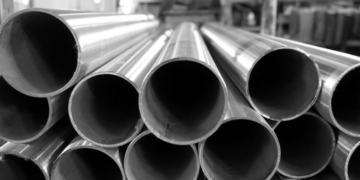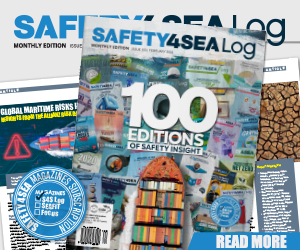Fortescue, with the support from the Maritime and Port Authority of Singapore (MPA) government agencies, research institutes, and industry partners, has conducted the world’s first use of ammonia, in combination with diesel in the combustion process, as a marine fuel onboard the Singapore-flagged ammonia-powered vessel, the Fortescue Green Pioneer, in the Port of Singapore.
The Fortescue Green Pioneer was loaded with liquid ammonia from the existing ammonia facility at Vopak Banyan Terminal on Jurong Island for the fuel trial.
In completing the fuel trial, the Fortescue Green Pioneer has also received flag approval from the Singapore Registry of Ships (SRS) and the “Gas Fuelled Ammonia” notation by classification society DNV to use ammonia, in combination with diesel, as a marine fuel.
Ammonia as a marine fuel
Globally, ammonia is used in agriculture and industry. It is manufactured as a chemical by combining nitrogen from the air with hydrogen. As a carrier for hydrogen, ammonia can be transported to demand centres for power generation and as a marine fuel in support of the energy transition. Several dual-fuelled ammonia vessels have been ordered by shipowners.
The Fortescue Green Pioneer started its journey towards becoming the world’s first ocean-going ammonia-powered vessel in 2022 when Fortescue successfully converted a four-stroke engine to run on ammonia, in combination with diesel, at its land-based testing facility in Perth, Western Australia.
In December 2023, the vessel sailed from Singapore to the Middle East and was showcased at the UN Framework Convention on Climate Change and associated meetings (COP28/CMP18/CMA5) in Dubai, United Arab Emirates. World leaders, industry captains and members of international organisations were among the guests hosted on the vessel.
First Ammonia Fuel Trial in Singapore
An Emergency Operations Centre was also set up at MPA’s Port Operations Control Centre for representatives of MPA, Fortescue, Vopak, research institutes, and government agencies to monitor the operations, which was supported by a drone-enabled live stream operated by Skyports Drone Services.
As explained, the fuel trial was conducted over a period of seven weeks and included rigorous testing of the Fortescue Green Pioneer’s ammonia storage systems, associated piping, gas fuel delivery system, retrofitted engines, and seaworthiness. The tests were conducted in phases to ensure safe port operations and safety for crew members and engineers who have completed a series of rigorous training sessions since October 2023. As part of the safety protocols for the conduct of these tests, crew members also donned personal protection equipment such as chemical protection suits, nitrile chemical gloves, rubber boots, positive pressure mask and hood, and portable gas detectors for the relevant operations.
The two four-stroke retrofitted engines served as proxy for the commercialisation of ammonia-fuelled marine engines under development globally. The post-combustion nitrogen oxide (NOx) levels met the local air quality standard, while efforts to reduce the pilot fuel for combustion ignition and nitrous oxide (N2O) emissions post-combustion will continue as more ammonia-fuelled marine engines and ammonia sources with lower greenhouse gas emissions become available.
The five cubic metres (three tonnes) of liquid ammonia used for the fuel trial was supplied by Vopak using its existing infrastructure at the 10,000m3 Vopak Banyan Terminal on Jurong Island. As part of the risk management, extensive pre-operations, safety checks and tests were conducted. A second tranche of three tonnes of liquid ammonia will be loaded for the Fortescue Green Pioneer to conduct further tests and trials over the next few weeks.
The ammonia fuel loading, a first for Vopak globally using its existing infrastructure in Singapore, reaffirms the potential for using existing and similar ammonia infrastructure cost-effectively by terminals globally to support the operationalisation, commercialisation and progressive scale-up of ammonia as a marine fuel for international shipping.
Classification by DNV
Fortescue engaged DNV to be part of the innovation process from the very early stages of this project. The Fortescue Green Pioneer’s ammonia fuel systems and engine conversion received class approval by DNV based on DNV’s Technology Qualification process to ensure that the new technology and systems fitted onboard, which were not covered under existing regulations, will function within specified limits and acceptable levels of confidence.
Prior to issuance of the relevant statutory certificates by DNV on behalf of the Singapore Registry of Ships, MPA worked closely with DNV and Fortescue on the technical assessment of the vessel and the approval process of the vessel’s ammonia safety systems and design under the SOLAS regulation on alternative design and arrangements.
Following the world’s first ship-to-containership methanol bunkering operation in Singapore in July 2023 and the implementation of digital bunkering operations from November 2023, the successful conduct of this ammonia fuel trial on board the Fortescue Green Pioneer marks a significant milestone in Singapore’s multi-fuel bunkering capability development to support the digitalisation, decarbonisation, and manpower development for international shipping. The collective support provided for such trials also demonstrates the facilitative regulatory environment, and the strong research and tripartite ecosystem in Singapore to support the conduct of trials and scale-up operations for new maritime fuels.
Shortlisted consortia from an earlier Expression of Interest for an ammonia power generation and bunkering solution on Jurong Island are currently involved in a closed Request for Proposal exercise to select a lead developer for the project.
MPA and Fortescue will present key learning points from the trials at suitable platforms as well as at other international fora in the future.
The safe conduct of this fuel trial supports the holistic assessment of the use of ammonia as a marine fuel, and the development of standards and safety procedures.
..Mr Teo Eng Dih, Chief Executive, MPA, said.
Cristina Saenz de Santa Maria, Regional Manager South East Asia, Pacific & India, Maritime, DNV, said “Working closely with both teams over the last two years, we have undertaken a rigorous technology qualification process to ensure the safety and performance of the ammonia fuel systems and engine retrofit. The successful culmination of this project reflects Fortescue and MPA’s commitment to drive innovation and cooperation in the industry, a vision that we share at DNV as we help our customers achieve their decarbonization objectives.”
Decarbonising the value chains of energy and end products will be a long-term journey with many stages and our customers and partners can count on Vopak’s proven expertise and assets as we progress alongside Singapore towards a sustainable future.
..Rob Boudestijn, President, Business Unit Singapore, Vopak, said.
In the past year, the maritime sector has seen a significant increase in initiatives focused on utilizing clean ammonia as an eco-friendly fuel for ships. Despite challenges such as expense and safety concerns, clean ammonia has emerged as a promising option for marine fuel, as well as for transporting hydrogen for power generation and industrial purposes.
According to Maritime Strategies International, the next 25 years are likely to see ammonia trade transformed with clean ammonia providing new demand for close to 400 very large gas carriers, compared to a current fleet of 375 focused on carrying LPG.



































































